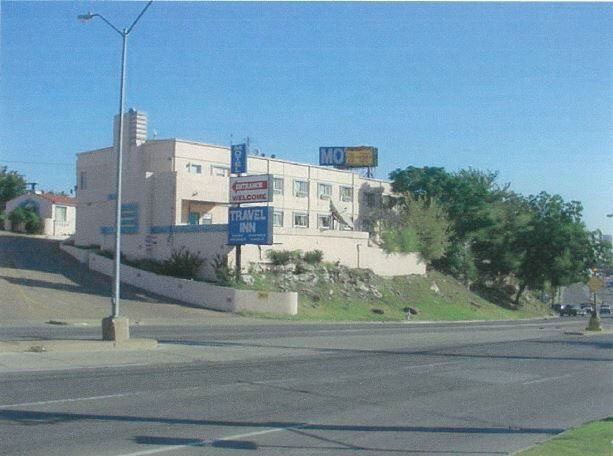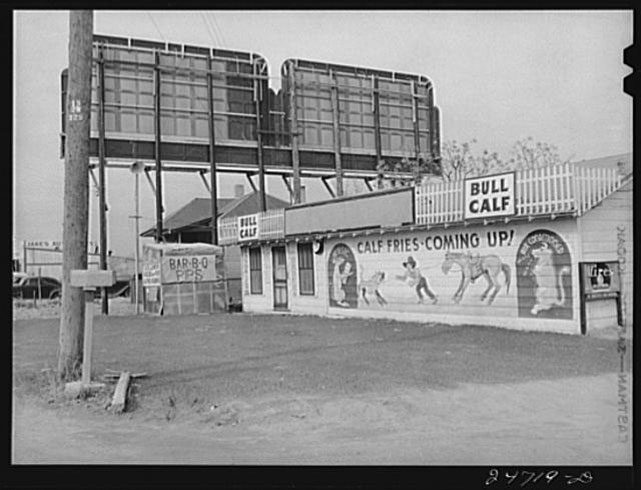
This photo of a roadside restaurant on Highway 80 between Fort Worth and Oak Cliff was taken in the 1930s. Photo courtesy of the Library of Congress
Roadside views
Edward H.R. Green purchased the first automobile in Texas in 1899. He drove the car from where it had been delivered by rail in Terrell to his home in Dallas; the trip took about four hours over dirt farm roads.
In the following two decades, roads would improve immensely, and networks of local and interstate highways began to take shape. All along the roadsides, commerce began to pop up to serve travelers — mechanic garages, hamburger stands, auto dealerships and motels.
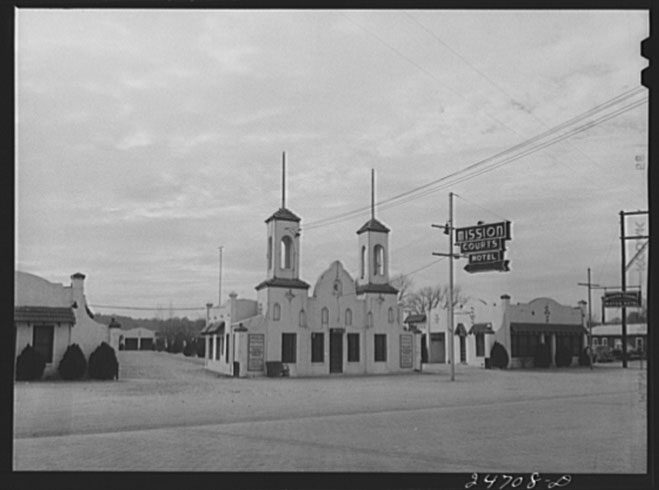
The Mission Motel was built on Fort Worth Avenue sometime prior to 1944, and it was demolished this year to make way for apartments. Photo courtesy of the Library of Congress.
Starting in the early 1900s, the Bankhead Highway ran from San Diego, Calif. to Washington, D.C. and right through our neighborhood. U.S. Highway 80 was part of the Bankhead Highway, and it ran from Fort Worth to Oak Cliff, where it turned into Davis and led travelers through Downtown and onto Garland Road, which also is part of highway 80, to Garland and Terrell.
In the early days, the stretch of Highway 80 between Fort Worth and Oak Cliff also was known as the Dallas-Fort Worth Turnpike, and it forked where West Davis meets Fort Worth Avenue today. That route created a direct connection between downtown Fort Worth and downtown Dallas.
In the 1920s, the Dallas-Fort Worth Turnpike was the most heavily traveled road in Texas, and it inspired decades of eye-catching roadside architecture.
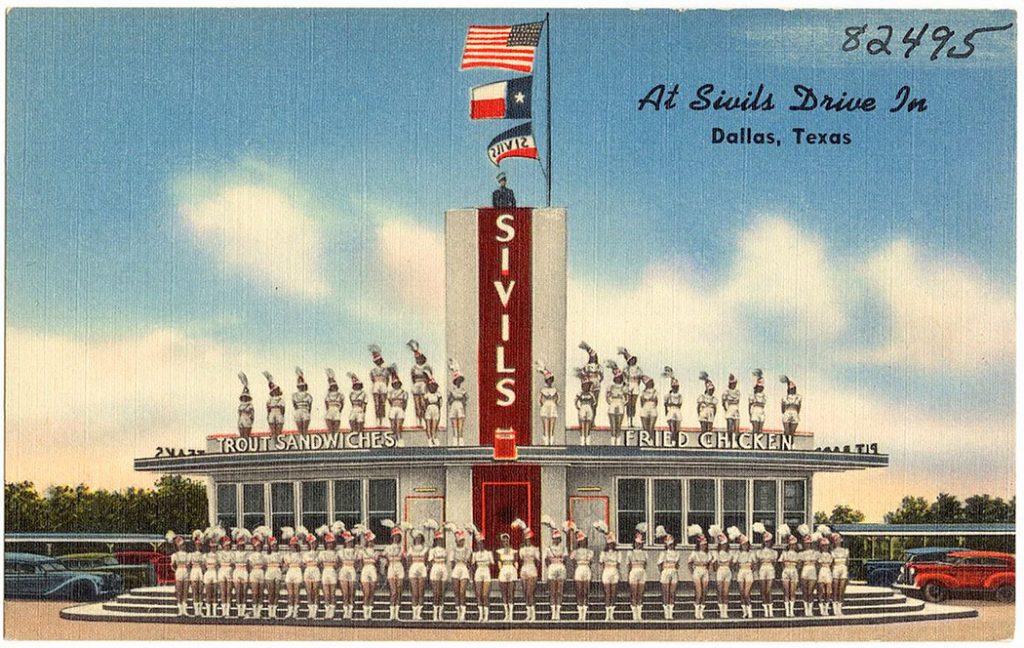
The bygone Sivil’s Drive In, which sat at triangle where Fort Worth Avenue meets West Davis, also known as Highway 80.
Many examples still exist all along the road between Oak Cliff and Arlington. Grand Prairie’s Theo’s Drive-In, with its Googie awnings; the Caravan Motor Hotel in Arlington, whose sign features palm trees and atomic-age angles, are among them.
Architecturally significant buildings on the part of the old Bankhead Highway that is now West Davis include Norma’s Café, the former auto-parts store that houses North Oak Cliff Beer and Wine, the former gas station adjacent to ABC Party, the former Butch’s Transmission and the retail building that now houses Spinster Records and Dallas Bike Works, among several original garages, gas stations and motels along the corridor.
Many of the old motels have been torn down. Most notably, in our neighborhood, the Alamo Plaza Hotel Courts and the adjacent Mission Motel.
At least one, the Belmont Hotel, has been renovated and reimagined as a chic Dallas hotspot for dining, drinking and hospitality. Designed by architect Charles Dilbeck, the Belmont was built in 1946 at a cost of $750,000. That’s almost $9.2 million in 2015 dollars, according to the Bureau of Labor Statistics inflation calculator.
J.D. Malone built the hotel and restaurant, and it never was a moneymaker for him.
Malone died of cancer about six years later.
“His daughter told me she thinks the hotel is what killed him,” says former Belmont owner Monte Anderson.
If he were going to renovate another motel along the corridor (which, Anderson says, he wouldn’t) he’d buy the Inn of the Dove, just up the hill from the Belmont at 1839 Fort Worth Ave., because of its location and good architectural bones.
Like many motels on the corridor, the Belmont was built as a motor court, which means it had little garages adjacent to each room. Those were converted to patios in the renovation.
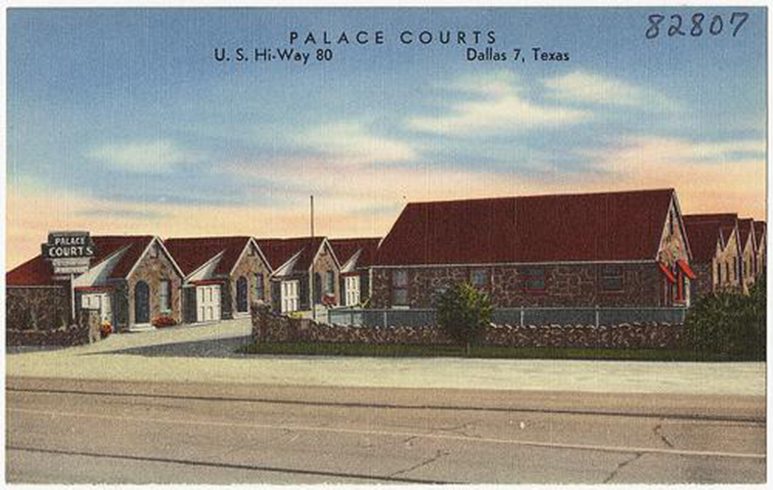
The Palace Courts Motel at 4053 W. Davis was built in 1930 and is still operating.
No other old motels on West Davis and Fort Worth Avenue have been renovated significantly. They include the 1930 Palace Courts Motel at 4053 W. Davis, which consists of little stone cottages adjacent to single-car garages. Along with many other properties on the old Bankhead Highway, it is eligible for the National Register of Historic Places. But it would need a champion pulling for it in order to make the list.
Historic and tourist organizations recently have taken an interest in the old Bankhead Highway. The Texas Historical Commission recently released an online virtual tour of the highway along with an app that informs travelers of historically significant spots along the way.
Also, the Texas Department of Transportation is working to catalog all of the old motels along the Texas portion of the Bankhead Highway.
Considering the rate at which these old motels are being torn down versus the effort and money it takes to revitalize them, the interest in them couldn’t come a moment too soon.

